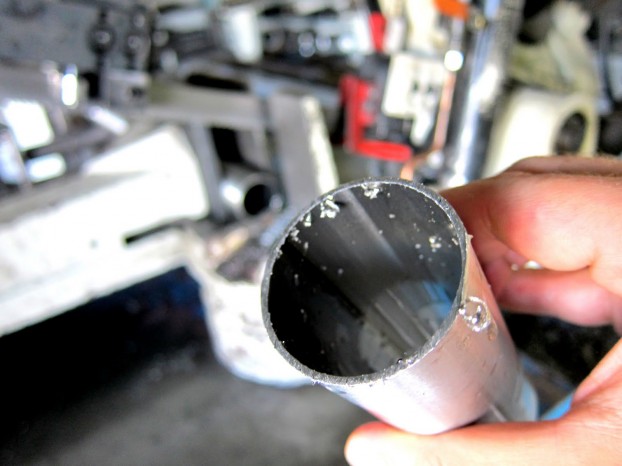Burr is that annoying and unwanted piece of material that rises at the edge after a modification process. It sometimes ruins the aesthetic looks of the work materials (metals, plastic, etc.) and their functions. So what do we do with it? We remove it by a process called deburring, of course!
The deburring process typically wastes our time and burns our energy when done manually. Luckily for us, there are deburring machines that can fill in the work! Today, let us peek at the processes and how the machinery helps us save time and effort!
What Are Burrs?
Burrs develop from different modification processes such as grinding, drilling, engraving, turning, and milling. There are three types of burrs in total, and they are classified by how they are formed physically. These three types are:
Rollover Burr
Rollover burr is the most common out of the three. It forms after a machining process that involves punching, piercing, notching, parting, and shearing. When the machine initially engages with the process, it bends and rolls over by pulling the material.
Poisson Burr
Poisson burr is a bulge caused by the downward pressing force of the machine. It can be bulging sideways or outward.
Breakout Burr
Breakout or cut-off burrs occur when the work material separates before the cut is finished.
Deburring
Deburring is a process to remove burrs through tools and machinery. It has several methods, but the most common ones are manual, thermal energy method, cryogenic, and electrochemical method. Each process has its ups and downs, and also its specific uses.
Common Processes Briefly Explained
Manual Deburring
This process is the traditional way to remove burrs. On top of that, it is the most common because of its versatile uses. Using tools like a grinder, sandpaper, files, scrapers, chisels, and other handheld mechanical tools is what manual deburring is all about! This method, however, is a lengthy process and requires us to be patient while doing the work.
Thermal Energy Method
The thermal energy method, or TEM, is a method used to remove the not-so-easy to reach burrs from many work material surfaces at the same time. It is the fastest burr-removal process by only taking up 20 milliseconds or more. It burns off the burrs on the surface by using a mixture of explosive gasses to generate thermal energy.
It starts by inserting the materials in explosive-proof or resistant chambers. They are then sealed and clamped. The chamber is vacuumed to remove the air and filled with the fuel mixture and oxygen. An igniter starts the burning process, resulting in melting away the burrs for approximately 20 milliseconds!
Cryogenic
The cryogenic process is used for removing burrs from plastic and diecast work materials. It removes the flash (read more), an excess material attached to a forge, mold, or cast, enclosing the holes of the product. The cryogenic process blasts the materials at cryogenic temperatures, passing their embrittlement temperature. This method uses dry ice, liquid nitrogen, and liquid carbon dioxide to achieve extremely low temperatures.
Electrochemical
This deburring method is used to deburr workpieces that are not-easy-to-reach, like intersecting holes. It is processed by using electrochemical machines, salt or glycerol, and electricity to dissolve the unwanted scraps attached to the workpieces. The electrical flow is applied by a specialized tool to reach the location of the burrs. It removes the burr for around five to ten seconds while leaving the around unaffected!
How The Machines Can Save Time And Effort
It Works Automatically
One advantage of machines is that they can work automatically. As I would say, effective deburring machines are automatic and efficient machines. Most of the deburring machines work automatically and are available from many manufacturing companies!
Hard To Reach Burrs? Don’t Worry!
Hard to reach burrs are the bane of many processors. Scraping them will only waste your time and effort, and there are chances it would not result in what you expected. With the deburring machines, you do not have to worry about those problems! It can effectively remove those annoying out-of-reach scraps and make your materials look seamless and smooth to touch.
Reliable
Manufactured machines are generally reliable as long as they are tested and proven. That is no different from deburring machines, and they are typically reliable when maintained properly and consistently. It helps you save time by minimizing your supervision while it does its work for you!

